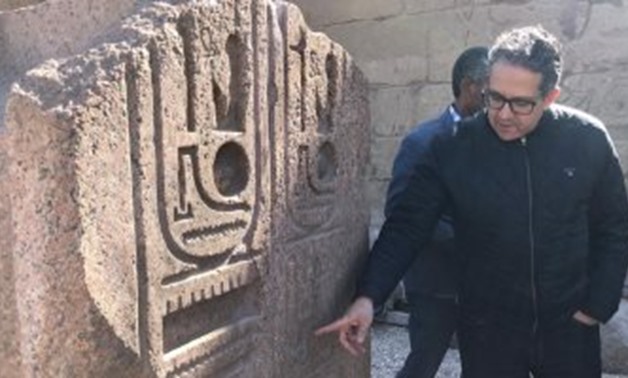
File - Khaled Anany.
CAIRO - 8 February 2020: Egyptian minister of Tourism and Antiquities Khaled Anany visited Luxor and Karnak temples on Saturday, February 8 to check the work that are being implemented within the project of developing and raising the efficiency of tourism services in that region and the elements of the visual identity project.
About 80 percent of the visual identity project is finished. The project will be applied in Luxor and Karnak temples, in addition to Kebbash road.
More than 90 percent of Kebbash road has been restored and developed, and will inaugurated soon.
The Pharaonic Kebbash Road is to become the longest gangway and open museum in the world.
The renovation of the Pharaonic Kebbash Road is considered a monumental moment for Luxor, as the project will bring the great road to life again.
Its new design is set to change Luxor’s position on the touristic map, as it will become the longest gangway and open museum in the world.
It is expected that the new makeover of Kebbash Road will attract tourists the world over and play a vital role in pushing the Egyptian tourism forward.
Kebbash Road will be reopened after its renovation.
In Ancient Egypt, Kebbash Road connected the Karnak Temple Complex with the Luxor Temple.
During the time of the Pharaohs, the road was one of the most important, as it hosted ceremonies and festivals.
The road was opened to the public in March 2013 by the Minister of Tourism.
Although Kebbash Road is 2.7 kilometers long, a walk through it is enjoyable as there are around 1,200 statues lining one side of the road, each resembling the Sphinx (where the head is that of a ram and the body is that of a lion) and sculpted from sandstone.
This meaningful decoration is dedicated to Amun, as the head of the statues are in the form of the god’s while the rest of the statue — the body of a lion — is a means of protecting the temples from looters.

Comments
Leave a Comment